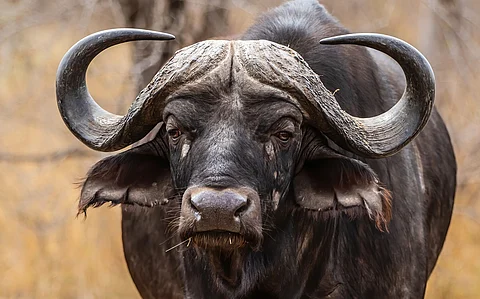

A study conducted by researchers in Tanzania’s Ngorongoro Conservation Area (NCA) has offered insights into the reasons behind human-Cape buffalo conflict that occurs across sub-Saharan Africa.
The African or Cape buffalo (Syncerus caffer) is a formidable and aggressive species. It is present in most sub-Saharan African countries.
It is categorised as Near Threatened on the International Union for Conservation of Nature Red List, with a declining population. The global estimate of the buffalo population is 569,000-573,000 (398,000-401,000 mature individuals), with a decline of 18 per cent during 1999-2014.
Human-African buffalo conflict occurs as a result of increasing human populations, loss of wildlife habitat and land-use change, which can lead to crop damage by buffaloes and subsequent confrontations with people, and poaching.
Interactions between humans and buffalo in Africa usually result in an estimated 200 human deaths annually. This, the researchers said, highlighted the need to study human–African buffalo interactions, especially in densely populated ecosystems.
The researchers conducted a semi-structured questionnaire-based survey of 131 households randomly selected in the Kambi ya Simba, Oldeani and Tloma villages surrounding the NCA in Tanzania.
They found that resource competition was the main factor that ignited human-African buffalo conflict. During the wet season, the buffalo often damaged crops of maize, beans, wheat, peas and coffee.
Farmers in the area usually used traditional mitigation approaches such as guarding farms, lighting fires, using torchlight and vocal and other auditory deterrents. A local coffee estate had also erected electrified fencing around its plantation. Fewer conflict incidents had been reported since 2016 when the fences were installed, as per the paper published by the researchers.
The researchers made a number of recommendations to minimise the conflict.
For instance, local communities should be involved in the development and application of mitigation methods and these should be implemented and modified, based on field tests.
They also suggested testing methods such as the use of chili bombs, drones and intense light torches, which have proved effective at mitigating conflict with elephants. “Because of the prohibitive costs of these methods, we recommend forming communal guard groups in all affected villages, to share resources and implement combined training on how to use these tools,” the experts noted.
They also advised continuing efforts by wildlife conservation authorities to prevent local communities planting crops within the 500-metre buffer zone around the protected area boundary.
“Our findings demonstrate the impacts of human-African buffalo conflict on local communities and the importance of continuing human-African buffalo conflict monitoring to improve conservation action and increase the participation of the local community in conservation activities,” the experts concluded.
Human–African buffalo conflict: perceptions of damage, and mitigation strategies, in villages bordering Ngorongoro Conservation Area, Tanzania was published in the journal Oryx on November 13, 2024.